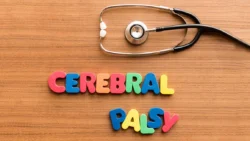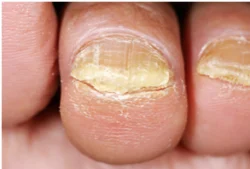
Press Release (ePRNews.com) - HYDERABAD, India - Mar 17, 2017 (UTC) - Among the birth defects, congenital heart disease is the most common type. Though there have been great advances in screening and diagnosis, the condition can go unnoticed for a long time, well until heart damage has progressed enough to cause detectable symptoms.
Cardiac sciences team at MaxCure urges parents and pediatricians to keep a watch out for heart disease symptoms. In infants, the typical symptoms include fatigue and/or sweating around the head during feeding, slow growth, fast breathing when at rest or asleep, irritability and bluish or pale skin, a sign of abnormally low oxygen levels. In slightly older children typically complain of heart palpitations and dizziness, getting tired easily with physical exertion and inability to keep up with playmates.
Dr. Satya Sridhar Kale, Consultant Cardiothoracic surgeon, MaxCure Hospital, said, “Congenital heart defects are very regular. 40% of these congenital heart defects go undiagnosed. The treatment for congenital heart ailments has improved vastly in the last several decades, however, with the age of the patient, the risk increases as the heart gets damaged with each passing year.”
Recently, in a very rare phenomenon Dr. Pankaj V Jariwala, Dr. Satya Sridhar and the team of cardiologists from MaxCure Hospital, Hyderabad came across a person who was suffering from a rare congenital medical condition including ‘Tetralogy of Fallot’ where impure blood mixes with pure blood.
Imtiyaz, 23 years old young male came to MaxCure complaining breathlessness. On investigation, the doctors found that he is known case of Cyanotic congenital heart disease.
Speaking on the occasion, Dr. Pankaj V Jariwala, Sr. Interventional Cardiologist, said, “In a condition like this, the patient will has four abnormalities in the heart which are developed in the fetal stage – hole in the heart; narrowing of arteries supplying to lungs; origin of aorta from both the ventricles called as overriding of aorta – major blood vessel supplying normally originates from left ventricle and hypertrophy of right ventricle. TOF occurs in about 10 in 2,000 newborns and equally in males and females.It is the most common cyanotic congenital heart defect.”
“What makes Imtiyaz’s case rare is, left ventricular clot and aortic dissection. Aortic dissection occurs when a tear in the inside of the aorta causes blood to flow between the layers of the wall of the aorta, forcing the layers apart.There are few case reports of TOF with LV clot and TOF with Aortic dissection combination. But the combination of TOF with LV clot with aortic dissection is not described in the medical literature and this is the first case to be reported,” added Dr. Pankaj V Jariwala.
“Imtiyaz underwent surgical repair followed by removal of left ventricular clot and aortic dissection. This surgery was high risk as patient was adult, long surgical time, clot-forming tendency. It involved repair of four abnormalities,” added Dr. Satya Sridhar.
Post surgery, the patient developed Neurological problems.
Dr. Simanchal Mishra, Sr. Consultant Neurologist, said, “Neurological complications post high risk cases are common. Conditions like brain stroke, infections, interuption of blood flow to brain occur. In this case, Imityaz developed a stroke. He was given a speech therapy and he is back to normal. But this will not be same in every case.”
Speaking on the occasion, Imtiyaz, the patient said, “I am very grateful the surgeons here who pioneered and were willing to take up my case and do the surgery, and I’m even more grateful that the outcome was so good. I got scared when I lost speech. But doctors helped me regain my speech. I am truly happy.”
https://www.maxcurehospitals.com/index.html
Source : MaxcureMaxCure
India





